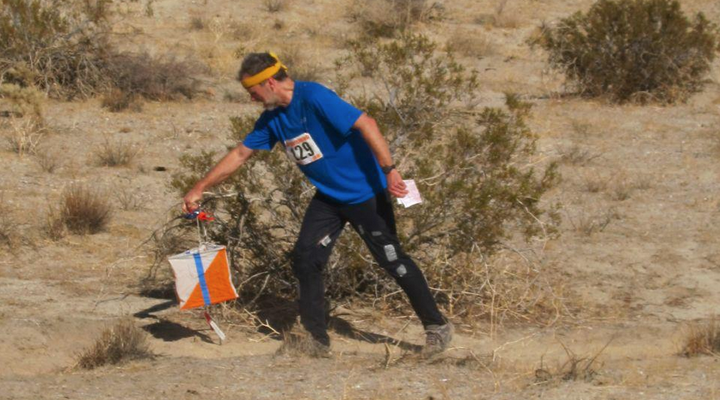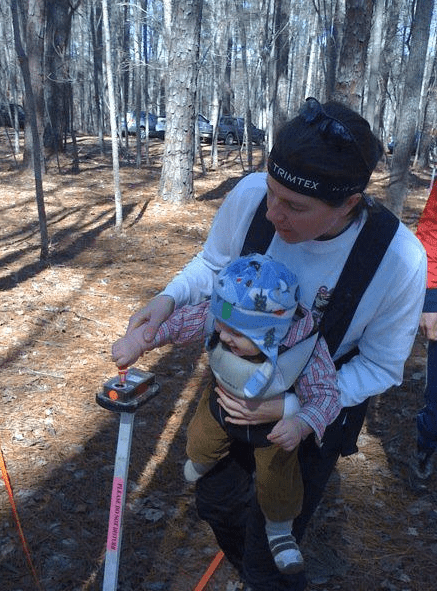
While many sports boast a ‘need for speed’ to succeed, this arduous sport demands participants to make split-second decisions and offers hundreds of people as competition.
According to the Orienteering USA rules, “Orienteering is a sport in which the competitors navigate independently through the terrain. Competitors must visit a number of control points marked on the ground aided only by map and compass. In standard orienteering competition the task is to run this course in the shortest possible time. Orienteering competitions are held primarily in terrain that, ideally, is unfamiliar to the competitors.”

Two Kentucky Trail Towns, Olive Hill and Morehead, will be the site for the Flying Pig XIX, an orienteering event expected to attract hundreds of competitors from around the country and several foreign countries the weekend of March 27 – 29.
The Flying Pig, hosted by Orienteering Cincinnati, includes the U.S. Individual Orienteering Championships as well as recreational competitions for newcomers to orienteering. This event is sanctioned by Orienteering USA, the national federation of the sport.
The campus of Morehead State University will be the site of the first race, the U.S. Sprint Championships, on Friday, March 27. Carter Caves State Resort Park near Olive Hill will be the site of the remaining two races, the U.S. Long Championships on Saturday, March 28, and the U.S. Middle Championships on Sunday, March 29.
The Carter Caves events will feature cliffs, steep hillsides and rocky terrain.
“It’s very challenging navigation,” said Mike Minium, the event director. The highly-detailed orienteering maps of Carter Caves were created by Vladimir Zherdev, a renowned Russian mapmaker.
The maps for the events are kept secret. Once a location is chosen, people who visit the closed venue will not be eligible to participate in the competition, but can still take part in the event.

“Each day’s race will have several courses of different length and difficulty. The championship course for each person is based on their age and gender,” Minium said. “We expect a range of competitors from about age 8 to over 80.”
For instance, those 8-year-olds would have a fairly easy, short course. The 20- to 34-year-olds have the longest and most strenuous course. Those participants older than that age group will still have an arduous coursse, but it may be slightly less difficult physically.
“The Friday race on the MSU Campus is the U.S. National Sprint Orienteering Championship,” Minium continued. “Sprint distance courses are very short races with an expected winning time for each course of 12-15 minutes. There are many control points to be visited, and the orienteer is constantly having to read the map detail and make split second route choice decisions.”
These sprint competitions are usually set in urban areas, which puts more emphasis on making the right decision to go a certain direction to get to the next marker.
The Long Course Championship is on Saturday at Carter Caves State Park and it should take winners around an hour and a half to complete the race.
“Competitors in the toughest courses will have to cover as much as ten miles of very rugged terrain,” he said. “Planning ahead and paying attention to the terrain is critical; control points on the longer courses can be a mile or more apart and the orienteer must make decisions about whether to go over or around hills, through or around deep ravines and cliffs, and so on.”
Also at Carter Caves, the Middle Distance Championships will be on Sunday.

“Middle distance has winning times of 30 to 45 minutes, and emphasizes a variety of navigational tasks,” he continued. “There are typically more control points, closer together than in long distance, and the orienteer has to pay careful attention in technical and complicated terrain.”
As of late February, 160 participants from 27 states, the District of Columbia and four other countries had registered for the event, but Minium says that he expacts many more.
“We expect over 300 competitors, perhaps as many as 400, and with lodging, meals and more, we expect a positive economic impact of more than $100,000 for the Carter and Rowan County area,” Minium said. “And for many people from outside the area, this will put Carter Caves and Morehead State University on the map, and we hope they will find reason to return again in the future.”
Orienteering USA has a partnership with the Kentucky Sports Authority and has worked to set up orienteering courses at five Kentucky State Parks sites. (Barren River Lake, Rough River Dam, E.P. “Tom” Sawyer, Taylorsville Lake and Big Bone Lick State Historic Site). A Flying Pig event was held at Big Bone Lick in Boone County in 2012.
The Kentucky Trail Town program was established by the Office of Adventure Tourism to promote communities along long distance trails or near an extensive trail system or waterway. Morehead, Olive Hill, Livingston and Dawson Springs have been designated as official Trails Towns.
To see a complete list of orienteering rules, click here.
For more information about the Flying Pig XIX, click here.
From the Kentucky Tourism, Arts and Heritage Cabinet

















